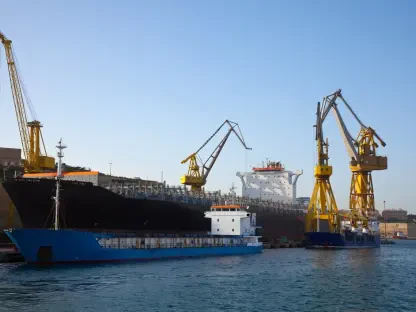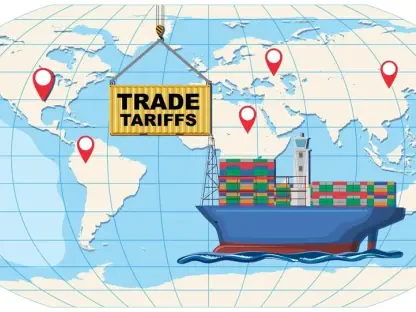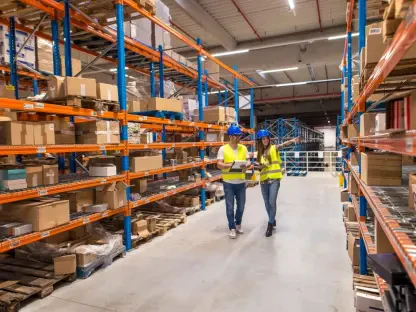Vietnam’s economy has made significant strides in the first quarter of 2024, exemplifying the country’s escalating impact within Southeast Asia. This economic surge underlines Vietnam’s strategic growth, which not only serves its own interests but also casts a wide net of influence over the ASEAN bloc.By adopting innovative economic policies and fostering a dynamic business environment, Vietnam has set a precedent for regional growth. The impressive economic performance is a culmination of careful planning and integration into the global market, which has spurred foreign investment and boosted key sectors.As Vietnam’s economic footprint grows, its developments are likely to usher in a wave of transformation throughout ASEAN countries. The nation is becoming a pivotal player, and its growth trajectory suggests that it will continue to shape economic trends and opportunities in the region.This remarkable economic uptick has potential far-reaching consequences for the socio-economic fabric of neighboring nations. Vietnam’s experience can inspire similar economic reforms and strategies across the region, potentially leading to a more interconnected and prosperous ASEAN.Vietnam’s holistic approach, emphasizing both industrial and technological advancement, not only fortifies its position but also enhances the prospects of ASEAN. With an emerging economy showcasing such vitality, Vietnam is undeniably carving out a significant role for itself and its regional partners in the future of Southeast Asia.
Vietnam’s Export Boom and Regional Trade Dynamics
U.S. – Vietnam Trade Relations
The remarkable escalation of Vietnam’s exports to the United States, peaking at $25.77 billion and making up over a quarter of the nation’s export turnover, is a critical indicator of the growing bilateral trade relationship between both countries. This surge not only solidifies Vietnam’s role as a major exporter but also has the potential to shift trade dynamics across the entire Southeast Asian region. Vietnam’s ability to capitalize on trade tensions and tap into global supply chains has not only fueled its own growth but also set a precedent for other ASEAN economies looking to diversify their trade partnerships.Additionally, Vietnam’s export strategy, highly focused on electronics, textiles, and agriculture, complements the United States’ demand for these goods while maximizing its domestic production strengths. As this relationship evolves, it has the potential to alter regional trade dynamics, encouraging neighboring ASEAN countries to enhance their export capacities and reinforce their trade ties with major global economies.
ASEAN Trade Context
Viewing Vietnam’s burgeoning trade within the ASEAN context reveals how its growth trajectory influences regional economies. ASEAN as a bloc works towards economic integration with initiatives like the ASEAN Economic Community, which aims for a single market and production base. Vietnam’s trade performance dovetails with this vision, potentially spurring other member countries to leverage their unique competitive advantages on the global stage. Furthermore, Vietnam’s proactive stance on trade, reflected in its comprehensive reform programs aiming at improving the business climate and trade facilitation, sets an example within ASEAN. Its efforts to streamline procedures, enhance transparency, and embrace digital customs platforms exemplify pathways other members may follow to bolster their standings in international trade.
Investment Opportunities and ESG Trends
Foreign Direct Investments in Vietnam
Vietnam has rapidly emerged as an attractive destination for foreign direct investment (FDI), with manufacturing and processing sectors receiving the lion’s share. The entrance of global tech giants and a robust portfolio of investments in energy and infrastructure underscore Vietnam’s crucial role in the realignment of global supply chains. This swell in FDI not only impacts Vietnam’s economy but also carries over to ASEAN by enhancing regional capacities in high-value industries and setting a benchmark for investment frameworks in the region.The constant inflow of FDI into Vietnam, coupled with proactive government measures, has a spillover effect that can boost investor confidence across ASEAN, potentially resulting in increased capital inflow into surrounding economies. Vietnam’s strategic economic policies serve as a beacon for its neighbors, guiding them on attracting FDI while fostering inclusive economic growth within the bloc.
Emphasis on Sustainability
The increasing attention to environmental, social, and governance (ESG) considerations by foreign businesses in Vietnam reflects a broader shift toward sustainable investment practices. Vietnam’s proactive approach in integrating sustainability into its investment agenda is reaffirming its commitment to responsible development. This commitment is not only restructuring Vietnam’s own economy but also nudging other ASEAN countries towards adopting similar measures.The enhanced focus on ESG factors is shaping the future of investment in ASEAN by promoting principles of sustainability that are expected to become standard considerations. This trend is conducive to fostering an investment climate in the region that is aligned with global sustainability goals, improving the long-term viability of ASEAN economies while addressing critical environmental and social issues.
Energy and Technology Initiatives
Vietnam’s Energy Sector Outlook
Vietnam’s newly unveiled Hydrogen Energy Strategy mirrors the country’s intention to transition toward cleaner energy sources, establishing development targets that stretch to 2050. This strategy is not only setting the grounds for Vietnam’s energy self-sufficiency and carbon neutrality objectives but is also attracting international investors and energy companies. This move solidifies Vietnam’s position as an emerging leader in the ASEAN energy sector, influencing neighboring countries to consider similar renewable energy transitions. The development of hydrogen and other renewable energies affirms Vietnam’s role as an innovation hub in ASEAN, which could incite multinational corporations and investors to look more seriously at ASEAN as a region committed to sustainable energy development. As Vietnam leads by example in the energy domain, it may ignite a revolutionary shift across ASEAN towards green energy solutions.
Telecommunications and Digital Growth
Vietnam is rapidly advancing in the telecommunications arena, marked by a significant development – the 5G Spectrum Auction. This event signifies a leap forward for telecom companies in Vietnam, which are now pushing the boundaries of digital transformation. The introduction of 5G will usher in an era of innovative digital services and spur economic expansion, showcasing Vietnam’s preparedness for the latest in technological innovation and connectivity. This milestone is not just a national achievement; it holds considerable importance for the entire ASEAN region. Vietnam’s progress in the digital domain can act as a significant driver for ASEAN’s journey into the digital age. As member countries observe Vietnam’s developments, they may also be inspired to enhance their digital infrastructure. This regional tech evolution could result in heightened interconnectivity, a thriving digital economy, and a workforce proficient in digital skills across ASEAN. Such advancements in digital competencies are essential for global competitiveness. Vietnam’s strides in 5G and digital transformation are testaments to its role as a key player in steering ASEAN towards a more connected and digitally proficient future. The potential impact on the ASEAN digital landscape is profound, setting the stage for joint progress and opportunities in the digital era.
Regulatory Landscape and Innovations
Legal Framework Evolution
Vietnam is making significant strides in bolstering its position as a hub for innovation and technological advancement with the introduction of legislation such as Decree 10/2024/ND-CP. Tailored to attract high-tech investments, this regulatory update aims to foster an encouraging and predictable legal ecosystem, which is crucial in wooing pioneering industries to its shores. This not only enhances Vietnam’s appeal as a prime location for investment but also contributes positively to the reputation of ASEAN as a region on the rise in terms of innovation.By refining their legal landscape to actively support high-tech industries, Vietnam illustrates an effective approach for ASEAN nations to gain a competitive edge. These legal modifications ensure that a stable and supportive environment is provided, catalyzing creativity and attracting both capital investments and a more skilled workforce. Such proactive measures highlight the country’s dedication to transforming into a knowledge-based economy. As ASEAN countries watch Vietnam’s progress, such legislative efforts can serve as a model for the entire region, promoting sustained economic growth fueled by high-tech developments and innovation.
Labor Market Adjustments
Regulatory changes in Vietnam’s labor market, especially those regarding the hiring of foreign workers, demonstrate the country’s intent to synchronize its labor laws with international standards and the demands of a growing economy. These amendments aim to create a more efficient and competitive workforce, which is crucial for driving economic development. By refining the rules for work permits and employment practices, Vietnam not only adapts to the globalization of production but also sets a precedent for ASEAN in terms of labor market reform.These changes have implications across ASEAN by promoting a consistent, professional, and adaptable labor force capable of meeting the needs of international investors. As Vietnam refines its employment regulations, it encourages neighboring countries to reform their labor laws, resulting in a more dynamic and globally integrated ASEAN workforce.
Infrastructure Development and the Logistics Sector
Strategic Industrial Clusters
Vietnam has taken a major leap in industrial development with the introduction of Decree 32/2024/ND-CP, which puts a spotlight on the advancement of strategic industrial clusters. These clusters are crucial for enhancing economic dynamism and efficiency in the country. As a result of this strategy, Vietnam is not only pulling in more investments but also significantly boosting the synergy and skills within its industrial sphere.This strategic move has broader implications for the ASEAN region as well. By fostering stronger regional cooperation and promoting shared industrial growth, these clusters help to knit the Southeast Asian economies closer together. Investments are channeled more effectively, and markets are more interconnected, fueling an increase in intra-regional trade.Vietnam’s approach serves as a model for its neighboring countries, illustrating the potential gains of coordinated industrial strategies. These industrial clusters could be the blueprint that propels ASEAN towards a more integrated and robust collective industrial stature. With this in mind, Vietnam’s focused initiative on developing specialized industrial zones stands as an inspiring example for the entire region to follow in its quest for enhanced industrialization and economic prosperity.
Fostering Vietnam’s Logistics Network
The optimization of Vietnam’s logistics sector, with a clear summary of regulations and investment climate, showcases the country’s robust development agenda. The implications are considerable for ASEAN since a well-developed logistics network in Vietnam can facilitate more efficient regional and global supply chains. These improvements are essential to ensuring ASEAN’s economic growth and competitiveness on the international stage.Vietnam’s progression in this sector could inspire similar enhancements within ASEAN, leading to a comprehensive, resilient, and integrated regional logistics network. The development of such robust infrastructure will be crucial for ASEAN to maximize the benefits from its strategic location and trade agreements, consequently bolstering the bloc’s economic interconnectivity.
Vietnam’s Trade Agreements and Global Integration
WTO Commitments and Free Trade Agreements
Vietnam’s active engagement in and adherence to the guidelines of the WTO, EVFTA, and AFAS highlight the nation’s dedication to open trade and integration into the global economy. Through the relaxation of foreign ownership restrictions in transport and services, these agreements enable Vietnam to harness significant economic and trade opportunities. In effect, these trade relationships project Vietnam as a pivotal gateway for regional and global economic engagement, influencing ASEAN economies to leverage these platforms for their advancement.Such pacts underscore Vietnam’s role as a harbinger of economic integration within ASEAN, potentially leading to more harmonized trade regulations and policies within the region. As a result, Vietnam can be seen as shaping the foundations for a more cohesive and competitive ASEAN in the realm of international trade.
Impact on ASEAN’s Economic Landscape
Vietnam’s strategic trade partnerships pave the way for substantial economic policy development and integration across ASEAN countries. The nation’s vigorous pursuit of trade agreements represents a formidable force that may redefine the economic landscape of the region. By aligning itself with the standards and regulations of prestigious international agreements, Vietnam sets a benchmark that other ASEAN members may strive to match.The potential ripple effects of Vietnam’s global economic integration on the future of ASEAN are vast. As the country successfully embeds itself into the global trade system, it encourages the region to adapt policies for enhanced competitiveness, augurs increased foreign investment, and provides impetus for ASEAN’s collective journey towards being a significant player in the world economy.









